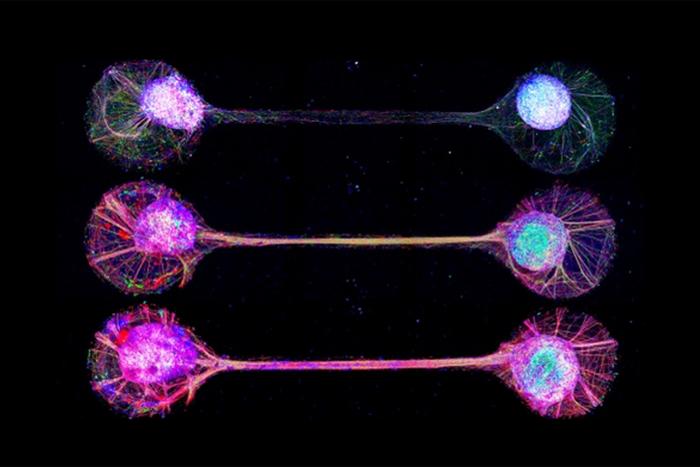A team of Japanese and French researchers has developed a technique for connecting lab-grown brain-mimicking tissue in a way that resembles the circuits found in the human brain. This advancement brings us one step closer to understanding the complex workings of the brain and could potentially lead to new treatments for neurological and psychiatric conditions.
Studying the exact mechanisms of brain development and function has always been a challenge for researchers. Animal studies are limited by differences in brain structure and function between species, while brain cells grown in the lab often lack the characteristic connections found in the human brain. However, recent studies have emphasized the importance of these interregional connections and the circuits they create for many of the brain functions that define us as humans.
Researchers from The University of Tokyo have made significant progress in this field by finding a way to create more physiological connections between lab-grown “neural organoids.” These experimental model tissues are created by growing human stem cells into three-dimensional structures that mimic the developing brain. The team connected the organoids using axonal bundles, which is similar to how regions are connected in the living human brain.
Tomoya Duenki, co-lead author of the study, explains, “In single-neural organoids grown under laboratory conditions, the cells start to display relatively simple electrical activity. When we connected two neural organoids with axonal bundles, we were able to see how these bidirectional connections contributed to generating and synchronizing activity patterns between the organoids, showing some similarity to connections between two regions within the brain.”
The connected cerebral organoids exhibited more complex activity compared to single organoids or those connected using previous techniques. Furthermore, when the researchers stimulated the axonal bundles using a technique called optogenetics, the organoid activity changed accordingly, and the organoids were affected by these changes for some time, in a process known as plasticity.
Yoshiho Ikeuchi, senior author of the study, states, “These findings suggest that axonal bundle connections are important for developing complex networks. Notably, complex brain networks are responsible for many profound functions, such as language, attention, and emotion.”
Alterations in brain networks have been linked to various neurological and psychiatric conditions, making a better understanding of these networks crucial. The ability to study lab-grown human neural circuits will improve our knowledge of how these networks form and change over time in different situations, potentially leading to improved treatments for these conditions.
The idea of growing a functioning human brain-like tissue in a dish has always seemed far-fetched, even to researchers in the field. However, this study represents a significant step towards that goal. By creating more physiological connections between neural organoids, the research team has brought us closer to understanding the complex workings of the human brain.
As research in this field continues to advance, it may become possible to create even more sophisticated brain-like tissues in the lab. This could revolutionize our understanding of brain development, function, and disorders, potentially leading to new therapies for a wide range of neurological and psychiatric conditions.
In conclusion, the groundbreaking work of this Japanese and French research team has opened up new avenues for studying the human brain and its complex networks. By growing brain-like tissue with more physiological connections in a dish, they have brought us one step closer to unraveling the mysteries of the mind and developing better treatments for brain-related disorders.


